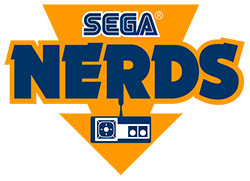
Was Sega Right to Abandon the Hardware Race After the Failure of the Dreamcast?
Sega is a video gaming leviathan, but its history and performance within the sector have been notably inconsistent. Despite many successes, the Japanese company has experienced some major failings, including the launch of the now-infamous Dreamcast.
As a result, Sega no longer manufactures video game systems. Abandoning the hardware race after its final catastrophic failure, the company chose to focus solely on its strengths: producing premium-quality software.
What’s interesting about Sega is not that they tried and failed to gain a foothold. Many before and since have done the same, notably Atari, Neo-Geo, and Phillips. What’s unique about their case is that, for a time, they did manage to carve out a dominant position in the sector, standing firm in the face of fierce competition from Nintendo.
It all went wrong with one final and expensive foray into the hardware market: the Dreamcast, which nonetheless remains popular among collectors. We take a look at whether, in hindsight, the company’s decision to quit the race was the right one.
The history behind the ill-fated Dreamcast
What’s interesting about the Dreamcast is that it started with a lot of potentials. Utilising the company’s experience as a platform and building on this, the innovative hardware was Sega’s attempt to enter the 128-bit era before their competitors could get a jump on them. The company’s overarching aim was to innovate. To deliver this, they teamed up with Microsoft. The two built an operating system based on Windows CE, with this being the first of its kind to have a modem inbuilt.
The Dreamcast was meant to be revolutionary, and in line with this, ambitious plans for online play were made. Demonstrating their faith in their creation, Sega spent an incredible $100 million on a marketing campaign (this was back in 1999, to put that figure into perspective).
Their aim was clear: to revive the glory days of Genesis. Unfortunately, they failed to lay the groundwork for success. They notably overestimated demand for their product, and while initial sales were promising, these quickly tailed off.
Though they’d learned from their mistakes re. the Saturn, making sure there was sufficient distribution, a strong marketing campaign, and software to support the system, Sega spent too much on a product that failed to appeal to a wide enough audience. 300,000 eager fans pre-ordered, with a further 500,000 Dreamcasts selling in the next two weeks, netting the company profits of $97 million on the first day. However, this momentum didn’t last. The product appealed to only a niche and committed gaming audience, failing to deliver the populist appeal Sega had hoped for.
Insufficient sales
It soon became clear that Sega’s ambition was futile, and the company stopped manufacturing the system after only eight million consoles had been sold. This meant the Dreamcast secured barely 15 per cent of the market share at its launch and managed to hold even less over its lifetime. A mere two years after its unveiling, the Dreamcast was scrapped, and Sega abandoned the hardware market altogether. But was this the right decision to make? While some diehard fans might argue otherwise, our personal feeling is that it was.
The upside to this is that Sega’s software became available on all platforms. A parallel can be drawn here to online casinos. These are competitive because they’re accessible from every type of hardware, and so are Sega’s products. This benefits developer and consumer. In the case of casinos, the ability to gamble confidently at top sites is accessible to both desktop and mobile users, widening the product’s appeal, growing its audience, and providing flexibility and variety to players. The same is true for those wishing to utilise Sega’s numerous software offerings, as many Sega games are now available on mobile devices.
The Dreamcast had one purpose: to help Sega dethrone Sony and Nintendo. It didn’t accomplish this, and the glory days of Sega’s past remained a distant memory. Nor did the product manage to hold the attention of gamers. Its early success proved to be a flash in the pan, quickly falling away.
The Dreamcast had one purpose: to help Sega dethrone Sony and Nintendo. It didn’t accomplish this, and the glory days of Sega’s past remained a distant memory. Nor did the product manage to hold the attention of gamers. The success that Sega used to enjoy seemed to be a distant memory, and they had no choice but to reevaluate their business goals and step out of the console wars.
What Sega, therefore, achieved, at least to our minds, is an additional strengthening of the area where it was already strongest. This only enhanced the quality and appeal of its products and secured its place as one of the finest software developers of a generation.





